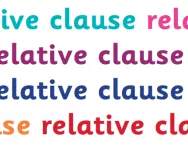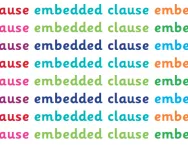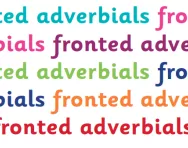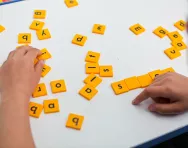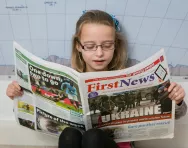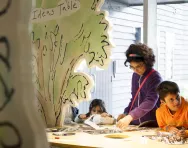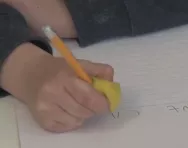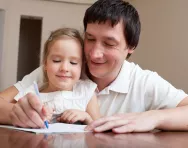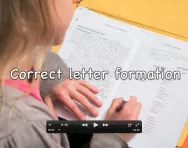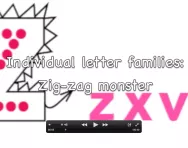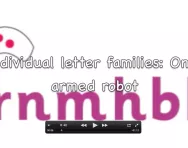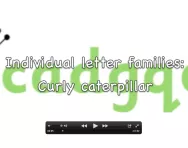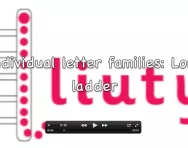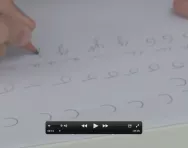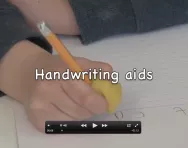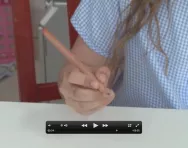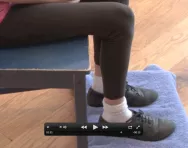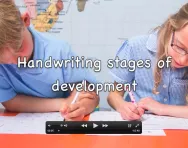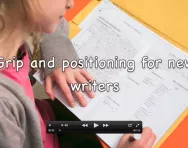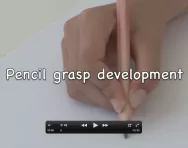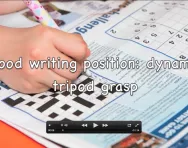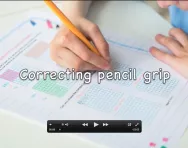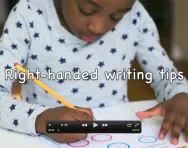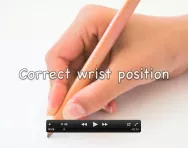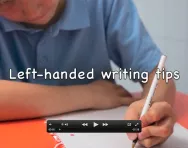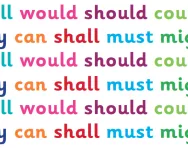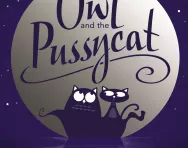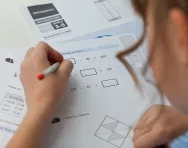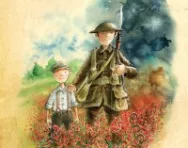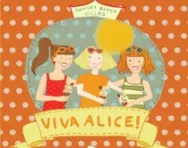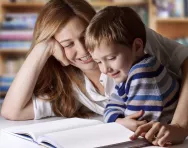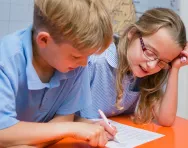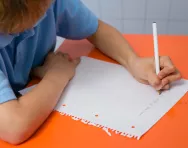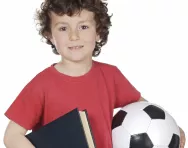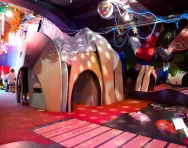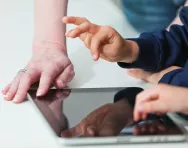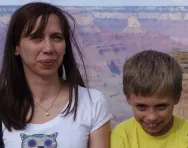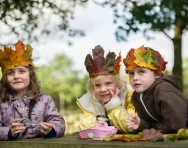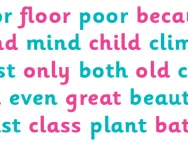What is a relative clause?
Relative clauses enrich sentences by offering extra information. We explain how to identify them in a sentence and offer tips to help parents support their child's grammatical understanding.
What is an embedded clause?
Understand and use embedded clauses with confidence with our plain-English parents' guide, including examples and details of how this aspect of sentence construction is taught in Key Stage 2 grammar.
What are fronted adverbials?
Fronted adverbials, words or phrases that describe the action in a sentence, are introduced to KS2 children in Year 4. Find out how to identify them and how your child will be taught to use fronted adverbials in their writing in our parents' guide to primary grammar concepts.
Best word games for children
Expand vocabulary, develop spelling skills, learn about homophones, anagrams and synonyms and compose huge numbers of silly sentences... all while having a great time. Whether your child is 3 or 13, our favourite word board games and literacy card games offer fast-paced fun for the whole family.
Best educational magazines for children
Looking for a fun- AND fact-packed publication for your child? The selection we've picked offer puzzles, original artwork, fiction, science projects to complete, history, hands-on making and more – and there isn't a plastic cover-mount in sight. Want to encourage your primary-school child to read regularly? Keep them supplied with new issues!
Museums reviewed by parents: Roald Dahl Museum and Story Centre
Make the most of family outings by choosing one of our parent-recommended museums. For fun, story-telling, literary inspiration and creative opportunities visit the Roald Dahl Museum and Story Centre.
Handwriting aids: pencil grips
Does your child struggle to hold their pencil correctly? Handwriting tutor Michelle van Rooyen explains how a pencil grip could help with their handwriting.
Handwriting aids: pens and pencils
With a return to greater emphasis on handwriting in primary schools, could a special pen or pencil help your child master the art of neat writing? Handwriting tutor Michelle van Rooyen explains what handwriting pencils and pens are available.
Video: Correct letter formation
Your child will be taught how to form the different letters of the alphabet differently, according to the ‘movement groups’ they fit into. Our explanatory video shows you how to form all letters (Long ladder, Curly caterpillar, One-armed robot and Z for Zig-zag monster) correctly, stroke by stroke.
Video: Letter formation, Zig-zag monster letter family
Help your child form each letter of the alphabet correctly with our step-by-step and stroke-by-stroke videos, with experts from the National Handwriting Association. In this video we look at the Zig-zag monster letter family: z, x, v, w, y and k.
Video: Letter formation, One-armed robot letter family
Help your child form each letter of the alphabet correctly with our step-by-step and stroke-by-stroke videos, with experts from the National Handwriting Association. In this video we look at the One-armed robot letter family: r, n, m, h, b, k and p.
Video: Letter formation, Curly caterpillar letter family
Help your child form each letter of the alphabet correctly with our step-by-step and stroke-by-stroke videos, with experts from the National Handwriting Association. Here we look at the Curly caterpillar family: c, a, d, g, q, o, e, s and f.
Video: Letter formation, Long ladder letter family
Help your child form each letter of the alphabet correctly with our stroke-by-stroke videos, with experts from the National Handwriting Association. In this video we look at the Long ladder letter family: l, i, u, t and y.
Video: Handwriting letter families
The letters of the alphabet can be divided into ‘movement groups’, based on the movement made to start writing the letter. Each group has a lead letter (L for Long ladder letters, C for Curly caterpillar letters, R for One-armed robot letters and Z for Zig-zag monster letters) and our handwriting advice video outlines the different letter families and how to practise writing them.
Video: Handwriting aids for children
Could a writing slope or an adaptive grip help improve your child's handwriting? Occupational Paediatric Therapist Catherine Elsey explains how to use commercially available handwriting aids in our handwriting advice video.
Video: Tripod grasp quick trick
Make sure your child holds their pencil correctly every time they pick it up with this quick trick, as outlined in our video by National Handwriting Association Occupational Paediatric Therapist Catherine Elsey.
Video: Handwriting posture and seating advice
A step-by-step video guide to establishing a good seating position for comfortable handwriting, with expert advice from the National Handwriting Association and an explanation of why postural stability is vital for children.
Video: Handwriting development stages explained for parents
From anti-clockwise circles to letter formation, find out about your child's handwriting journey and how you can support them at home in TheSchoolRun's video, featuring experts from the National handwriting Association.
Video: correct handwriting grip and positioning for new writers
Help your child establish great handwriting habits from Reception and KS1 with our expert advice video for the parents of new writers. From the correct pencil grip to paper positioning and posture, the National Handwriting Association's Catherine Elsey explains what to look out for and how to make immediate improvements to help your child.
Video: Pencil grasp development
From eighteen months to five years, TheSchoolRun's handwriting video explains how children's pencil grasp changes over time, how to establish good handwriting habits early on and what to expect in every stage.
Video: The dynamic tripod grasp explained
Video advice and tips to help establish a good handwriting position, including details of the dynamic tripod grasp (the ideal hand position for writing) and why it's best for children to hold their pencil in this way when they're writing.
Video: The dynamic tripod grasp for better handwriting
Children who hold their pencil or pen in the ideal handwriting position, the dynamic tripod grip, can write comfortably for longer. The National Handwriting Association's Catherine Elsey explains how to help your child establish a confident tripod grip and how it helps avoid hand pain.
Video: Correcting pencil grip
Does your child struggle to hold their pencil correctly? Our handwriting tips video offers expert advice on correcting pencil grip and establishing the ideal dynamic tripod grasp, with tips from the National Handwriting Association.
Video: Right-handed handwriting tips and expert advice
Right-handed handwriting tips and advice from the experts, with practical examples of the best way to position paper correctly and hold the pencil with a tripod grasp. Experts from the National Handwriting Association feature in TheSchoolRun's new handwriting video series.
Video: Correct wrist position for handwriting
TheSchoolRun's new handwriting videos feature experts from the National Handwriting Association offering tips to help parents improve their children's handwriting. This video offers advice to help position the wrist correctly for fluid, comfortable handwriting.
Video: Left-handed handwriting tips and expert advice
Left-handed handwriting tips and advice from the experts, with practical examples of the best way to position paper correctly and how to hold your wrist in the optimal position for writing. TheSchoolRun's new handwriting videos feature experts from the National Handwriting Association.
What are modal verbs?
Modal verbs indicate possibility, obligation or ability. Find out how your child will be taught about modal verbs in grammar lessons in KS2 and the kinds of activities they might be asked to complete in the primary-school classroom.
7 classic poems to read with primary-school children
Poems come in all shapes and sizes. Some rhyme, some don't. Some are old, some are new. Introduce your child to a world of words to whisper, savour and inspire with some classic poems, chosen for primary-school children of all ages by poet Helen Mort, editor of The Owl and the Pussycat: An anthology of poems that every child should read. Enjoy!
Changes to KS2 SATs in 2025: what parents need to know
If your child is in Y6 in 2025, read on for the most up-to-date SATs information for parents.
Best children's books about WWI
Our pick of powerful, informative and evocative novels, anthologies and non-fiction books will help primary-school children understand the facts about the Great War, as well as the everyday lives of the people who lived through it in the trenches and on the Home Front.
14 of the best books for children for summer 2014
Make this summer a fiction-packed break with our pick of the best kids' books to read on the beach, by a lake, up a mountain, in a tent or just in your own back garden! From laugh-out-loud adventures to murder mysteries and junior chick lit, we've got great suggestions for every genre and every child.
4 ways to bring poetry to life for your child
With poetry on the new national curriculum for children as young as five, poet Adisa the Verbaliser explains how to make poetry magical for your child.
What is a cloze test?
An important part of the new-format 11+ exam, and a valuable test of your child's ability in English, we explain what cloze procedures involve.
5 ways to turn your child into a budding writer
While some children love nothing more than sitting down with a blank sheet of paper and a pen, others are filled with dread at the thought of writing much more than their name at the top of their worksheet. Teacher and author Alison Wilcox shares her tips for encouraging the writing bug.
Best kids' books about football
Would your child rather be kicking a ball than picking up a book? Get them excited about reading with fiction and non-fiction titles about the beautiful game, from World Cup histories and step-by-step technique manuals to brilliant football fiction for all ages.
Museums reviewed by parents: Discover Children's Story Centre
Bring learning to life with a visit to one of our parent-recommended museums. We love Children's Story Centre Discover, a haven for bookworms, story-tellers and adventurers in Stratford, north east London.
Why games-based learning is great for your child
If you despair of the amount of time your child spends attached to their tablet, think again: games and apps are an important part of their learning journey, from pre-school to secondary school, and can help to improve problem-solving skills and communication, as well as boost motivation. Lucy Dimbylow finds out why gaming means learning in the twenty-first century.
'He struggled to form his letters correctly and his handwriting was illegible'
Cécile Watson, from Bromley in Kent, describes her experience of the SEN and school system with her son Jean-Pierre, 11, who has dysgraphia, and shares her tips for other parents.
11 easy tips to make Shakespeare fun for kids
You don't have to be a theatre buff or a classic-literature lover to appreciate Shakespeare's wonderful stories, compelling characters and beautiful language. We say it's never too early to introduce children to the Bard, so here are 11 great ways to help under-12s fall in love with his verses.
What are exception words?
As your child learns to read you might hear them talk about the 'exception words' they are learning. We explain what exception words are, what role they play in phonics learning and how you can support your child's developing reading and spelling skills at home.
